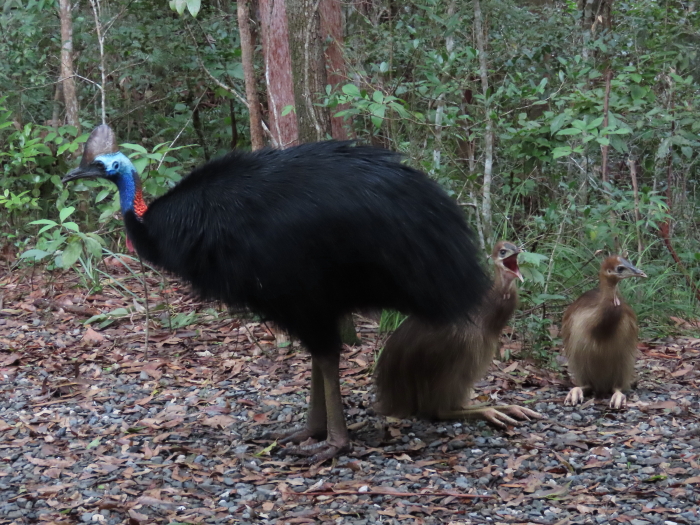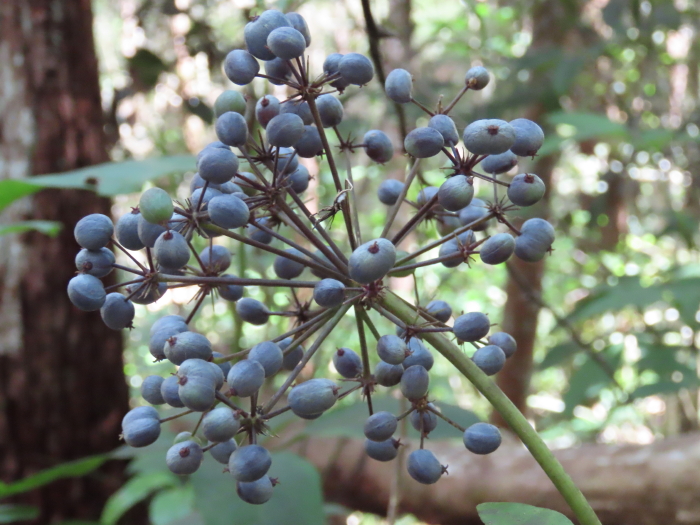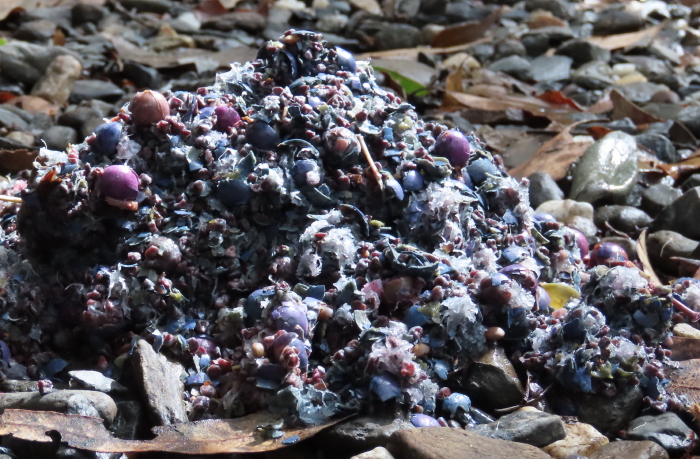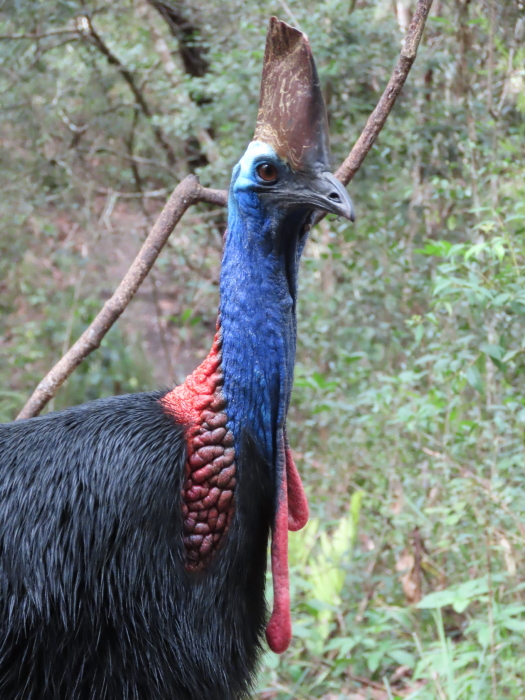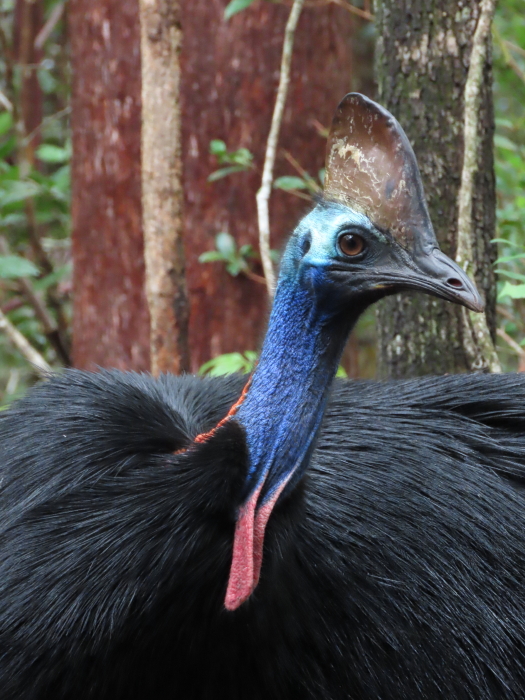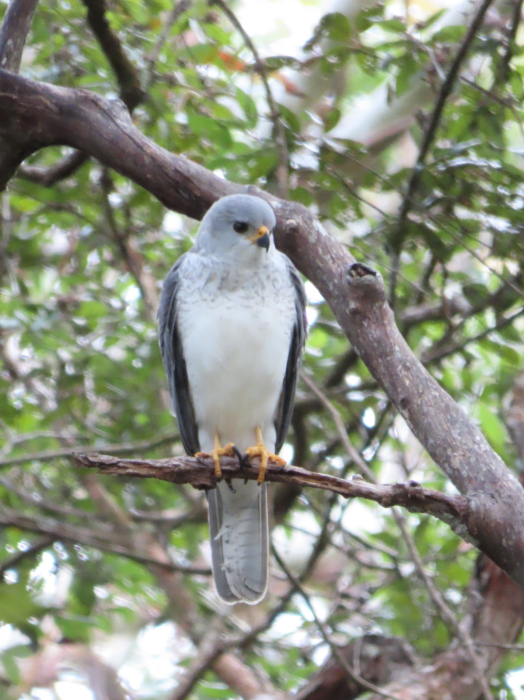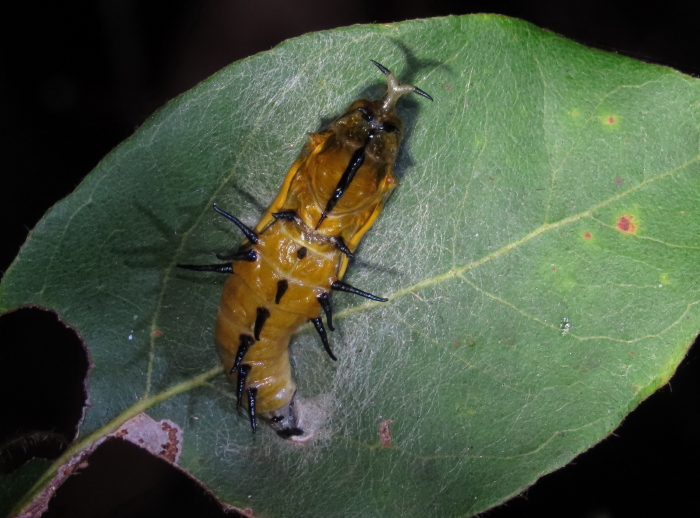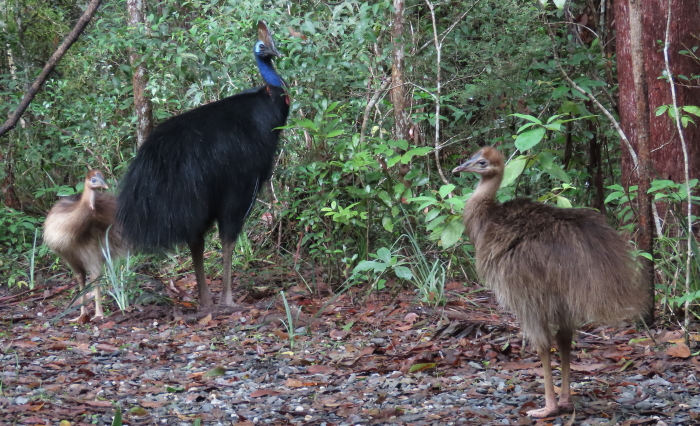
It has been a very mild winter so far. Only once did the temperature drop below 10 degrees in the morning. After many drizzly days, we now have stable, sunny conditions. Perfect for our python, which has moved from King Parrots to larger prey. It had a more bandicoot-sized bulge recently and it spent a few days in a sunny spot digesting it.

A pencil-thin juvenile Northern Dwarf Crown Snake was seen near the house,

and this good-sized huntsman was out and about, too.

Some Creek Satinash (Syzygium smithii) and Scented Satinash (Syzygium oleosum) are fruiting, attracting Satin Bowerbirds, the odd Spotted Catbird

and one immature Golden Bowerbird.
The Crimson Rosellas are feeding on the small nuts of Dodder Laurel (Cassytha filiformis), and you can hear their tinkling contact calls through the forest.

A small flock of Silvereyes is tucking into the fruits of the Red Cluster Heath (Acrotriche aggregata).

Dad’s youngster, now about 6-7 months old, is losing its stripes and is venturing a bit further away from dad when they are feeding.

Apart from mistletoes, there is not much flowering in the canopy now, and the Yellow-bellied Gliders have returned to their feeding trees. Fresh cuts in the bark, running with sap, are attracting regular visitors: birds and insects during the day, moths and other gliders at night. Sugar Gliders (now Krefft’s Glider), Broad-toed Feathertail Gliders and Striped Possums have all returned to the Red Mahogany restaurants. Spotlighting guests even found two Greater Gliders high up in a Rose Gum a few days ago. Greater Gliders are strict leaf-eaters, specializing in just a few species of eucalypts.
It appears that we have a new male tree-kangaroo, who often hangs out in the same part of forest

The riflebirds are busy displaying near the cabin. There were even 2 mature males displaying to each other on the same stump.
It seems the mild conditions are tempting some birds into an early breeding season: A Mountain Thornbill has built a nest nearby and a pair of Spotted Pardalotes is looking for a suitable site.

